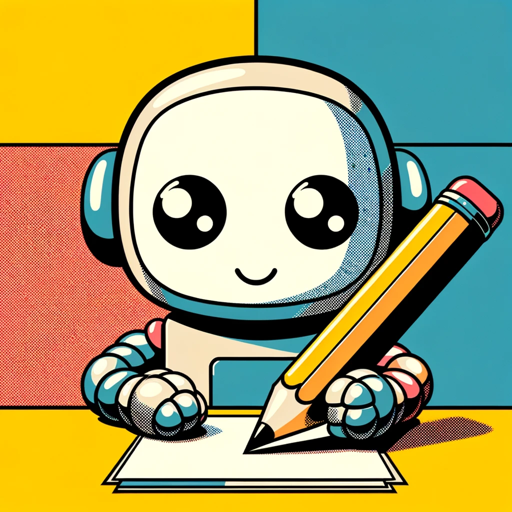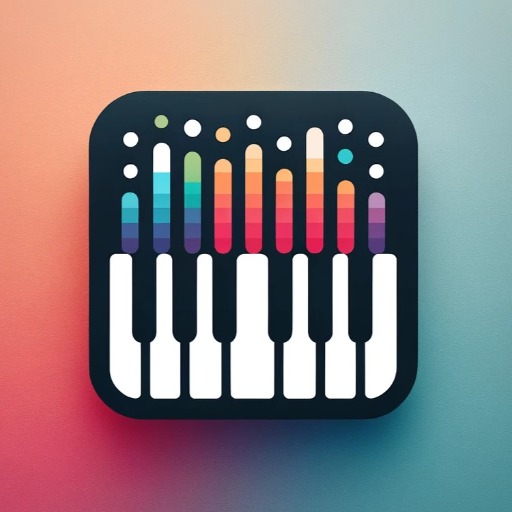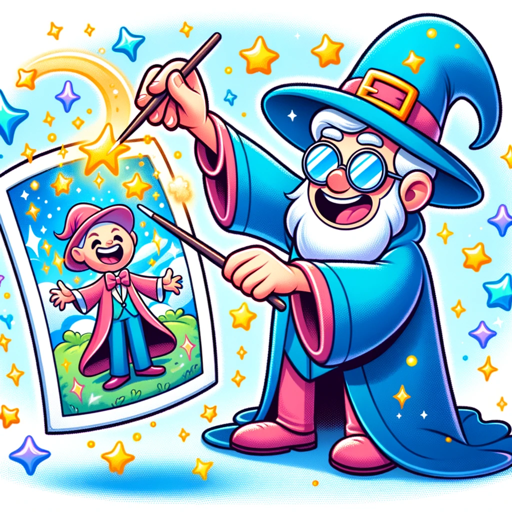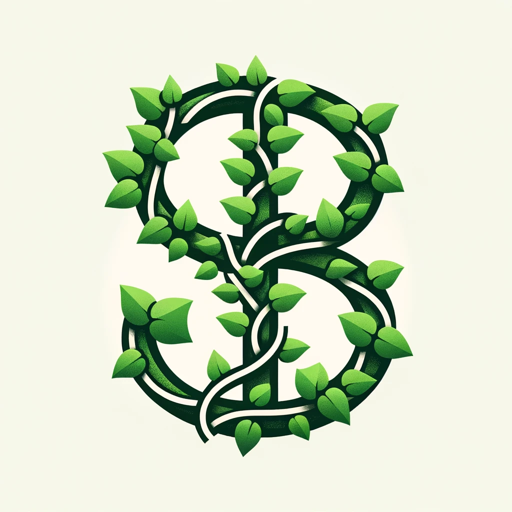Creative Prompt Tokens Explorer-creative word generation tool
Transform ideas into evocative visuals.
Apply the 10 step process to a word, phrase, concept, TV or film title, etc
Suggest a balanced valence word for 'transition'
Develop a composite word with multiple types of valence
Words, phrase, films, TV or book titles.
Related Tools
Load More
Prompt Engineer
Generate superior ChatGPT prompts or improve your existing prompts. Become a pro prompt engineer, by learning and applying best prompt practices.

Prompt Crafter
I will craft the perfect prompt for every user's needs

Prompt Generator by Prompt Snapshot
Generates detailed, awe-inspiring image ideas.

A1111 PromptCrafter
Crafting precise Stable Diffusion Prompts from user input

The Prompt Alchemist - Refiner of Prompts
Whether it's crafting perfect GPT instructions, writing system and user prompt or to learn the art of prompt engineering, The Prompt Alchemist is your dedicated artisan in the field of AI. Ready to transform your queries into enlighted answers, compatib

Prompt Crafter
I craft the perfect prompt, so you don't have to.
20.0 / 5 (200 votes)
Introduction to Creative Prompt Tokens Explorer
Creative Prompt Tokens Explorer is designed as a specialized tool for enhancing creativity and precision in text-to-image prompts. Its primary function is to assist users in mastering language and visual representation by helping them create innovative, emotionally resonant composite words. These words, referred to as 'visuoleximorphs,' combine lexical and visual elements to evoke vivid imagery, enhancing user prompts' effectiveness in AI-driven image generation. Drawing from a structured word search methodology, the tool emulates a reverse dictionary and thesaurus, enabling users to explore words and concepts from various perspectives, while experimenting with new terms that align with specific emotional or thematic intentions. For instance, if a user wanted to generate visuals associated with a 'digital landscape,' the tool could help them create terms like 'GeoVectoria' or 'PixelTerrain,' then guide them in testing these terms in image generation prompts to refine the results.

Main Functions of Creative Prompt Tokens Explorer
Word and Phrase Search
Example
A user provides a query like 'urban melancholy,' and the tool broadens this to explore synonyms, rare terms, technical jargon, and related concepts. It suggests terms such as 'MetropolisDusk' or 'ConcreteSorrow' through a step-by-step process.
Scenario
This is used when a user is unsure about the specific word to use for a prompt and needs assistance finding the perfect term. It deepens the linguistic exploration of a concept by breaking it down into multiple layers of meaning and expression.
Composite Word Generation
Example
Through processes like 'Word Fusion' and 'Phonetic Creativity,' the tool generates terms like 'FloraEther' or 'NeuroShade,' representing complex blends of natural and digital worlds.
Scenario
This feature helps a user create new, innovative words that are both visually and conceptually rich, enhancing text-to-image prompts. For instance, a fantasy writer may use it to craft imaginative world names or spell effects.
Prompt Structuring and Testing
Example
Users can test their newly created words in basic, context-enhanced, and style-modified prompts, such as '/imagine prompt: GeoVectoria, photo' or '/imagine prompt: PixelTerrain —style raw —s260.'
Scenario
This is applied when users want to visually test how their created terms translate into AI-generated images. It helps them refine their token's visual impact and emotional resonance by running different versions of a prompt.
Ideal Users of Creative Prompt Tokens Explorer
Creative Writers and Artists
Writers and visual artists who frequently create fantasy worlds, characters, and scenes would benefit from the tool's ability to generate neologisms and innovative word combinations. They can use this service to refine their linguistic creativity and visual language, thereby enhancing both the conceptual depth and aesthetic of their projects.
AI Prompt Engineers and Designers
AI-driven image generation specialists who want to experiment with prompt creation and optimization will find value in this tool. By helping them craft new composite words, it allows these users to expand their control over the AI's visual output and create more accurate and emotionally resonant images.

Guidelines for Using Creative Prompt Tokens Explorer
Step 1
Visit aichatonline.org for a free trial without login, no need for ChatGPT Plus.
Step 2
Familiarize yourself with the tool’s interface and features, focusing on its ability to generate creative words and phrases by analyzing your inputs in a multi-disciplinary context.
Step 3
Start with a word or phrase query and explore the suggested outputs, which may include formal definitions, rare terms, and neologisms. This helps in broadening the scope of ideas for text-to-image prompting.
Step 4
Use composite word generation techniques like word fusion and conceptual blending to create innovative terms that capture complex ideas. Test these terms in different prompt structures to evaluate their effectiveness.
Step 5
Iterate and refine your queries and generated terms based on feedback from visual outcomes. Compare results across different prompt structures for comprehensive analysis.
Try other advanced and practical GPTs
Song Maker
AI-powered music composition

Quiz Master
AI-powered quiz generation for advanced learners

Cartoon Photo Magician 卡通照片魔法师
AI-Powered Cartoon Image Transformation

Instablog
Create SEO-optimized content with AI

年终总结填写大师
AI-powered tool for year-end summaries.

Sound Better
AI-powered tool to refine your writing.

Caricature Artist AI
AI-powered caricatures, instantly personalized.

Gift Finder
AI-powered gift ideas for any occasion.

超级无敌面试助手
AI-driven interview practice and feedback

全球热搜排行(GlobalTrendTracker)
AI-Driven Global News and Trends.

BioExplorer
AI-driven insights for biomedical research.

3D Image Creator
AI-powered 3D animation for your images
- Content Creation
- Creative Writing
- Academic Research
- Idea Generation
- Visual Design
Q&A about Creative Prompt Tokens Explorer
What is Creative Prompt Tokens Explorer?
Creative Prompt Tokens Explorer is a tool designed to help users generate innovative words and phrases for text-to-image prompting by emulating a reverse dictionary and thesaurus. It explores various lexical, cultural, and conceptual angles to broaden the user's creative output.
How can I use Creative Prompt Tokens Explorer for text-to-image generation?
You can use it by inputting words or phrases related to your concept, which the tool then expands through steps like formal definitions, rare terms, and composite word generation. These outputs can be used directly in text-to-image prompts to achieve specific visual and emotional effects.
What types of queries work best with Creative Prompt Tokens Explorer?
Queries that are open-ended or conceptually rich tend to work best, such as themes or abstract ideas. The tool excels at exploring creative, multi-faceted interpretations of inputs, making it ideal for artistic, academic, or design-related uses.
Can I customize the output to fit specific themes?
Yes, you can tailor the output by specifying themes or stylistic preferences. During the composite word generation process, you can focus on elements like sound, symbolism, or thematic resonance to create words that align closely with your intended aesthetic or emotional impact.
What makes Creative Prompt Tokens Explorer different from a regular thesaurus?
Unlike a regular thesaurus, Creative Prompt Tokens Explorer goes beyond simple synonyms by incorporating multi-disciplinary terms, historical context, technical jargon, and creative neologisms. It aims to generate words that are not only semantically accurate but also evocatively rich and visually suggestive.